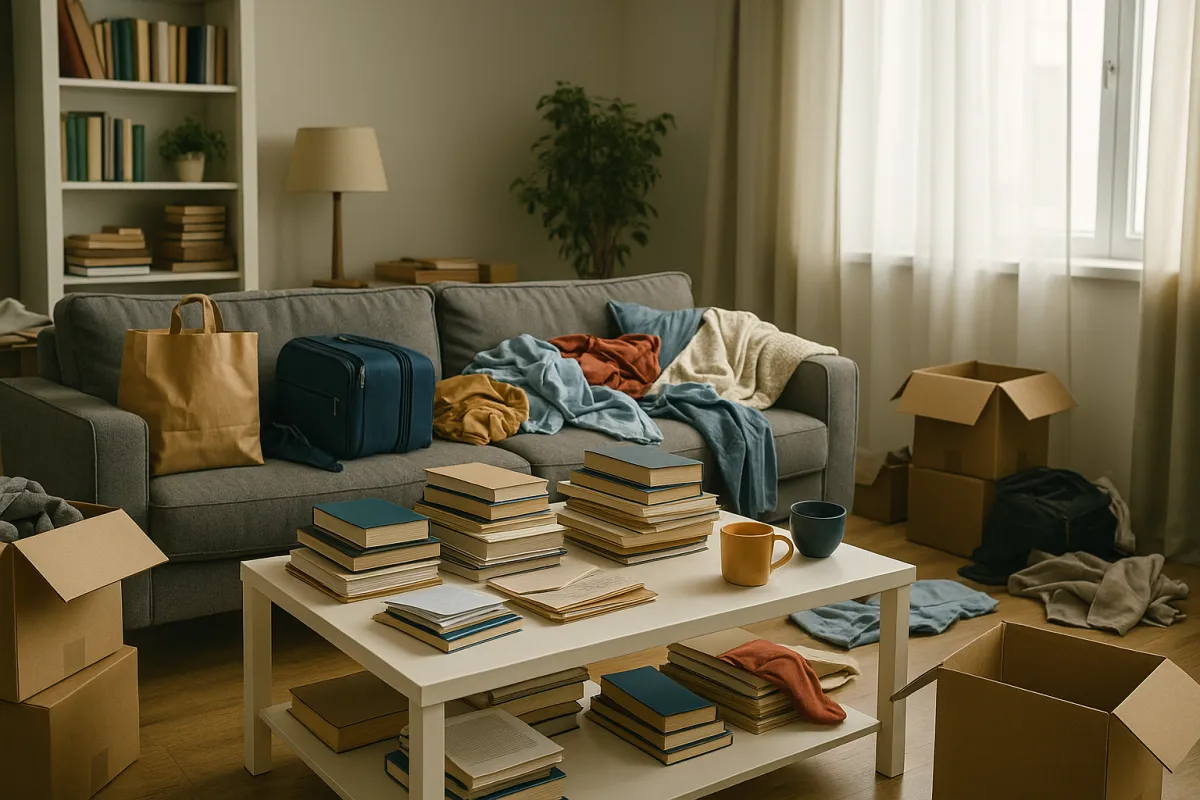
Plan Your Hoarder House Cleanup Safely and Effectively
Cleaning out a hoarder house is a daunting project that requires careful planning and safety precautions. In this first step, you’ll learn how to create a cleanup game plan that addresses hazards, gathers supplies, and sets you up for success. Hoarded homes often contain hidden dangers like mold, pests, or structural damage, so it’s critical to plan ahead and prioritize safety before starting.
An organized approach will make the process more manageable and less overwhelming.
Assess Hazards and Safety First
Begin with a walkthrough of the property to identify major hazards. Common risks in hoarder homes include fire hazards from flammable clutter, tripping or collapsing piles, mold growth, pest infestations, and poor air quality.
Take note of any sharp objects, biohazards (like animal waste), or structural issues (e.g. weak floors) that need addressing. Safety must come first: ensure you have personal protective equipment such as gloves, heavy boots, dust masks or respirators, and even hard hats.
It’s wise to have a first-aid kit, fire extinguisher, and adequate lighting on hand during the cleanup.
If the home has utilities like electricity or gas still on, verify they are in safe working order to avoid accidents. In severe cases (e.g. extensive mold or animal hoarding), consider bringing in professional inspectors to check structural stability or hazardous materials before you begin. Planning for safety upfront will prevent injuries and costly mistakes.
Gather Supplies and a Team
The next part of your plan is gathering proper cleaning supplies, tools, and people to help. Hoarder cleanups generate enormous amounts of trash, so stock up on heavy-duty trash bags, boxes or bins for sorting, cleaning solutions, and tools (like shovels, grabbers, and brooms).
Depending on the level of clutter, you may need to rent a large dumpster to dispose of debris.
Designate a staging area (such as the yard or garage) where you can temporarily move items out of the house for sorting.
Enlist help if possible – a support team of family members, friends, or volunteers can make an enormous job more feasible (we’ll cover building a support team in Step 4). Even a professional junk removal or biohazard cleanup service can be valuable for the worst areas. Make sure everyone involved is briefed on the plan, safety measures, and has proper gear. Never tackle a dangerous hoarder cleanup alone.
Tip: Check with your local municipality for any special disposal rules (for example, paints, chemicals, or appliances often require special handling. Part of your planning should include arranging proper disposal for hazardous materials.
Create a Step-by-Step Cleanup Strategy
With hazards addressed and supplies ready, outline a step-by-step strategy for the cleanup. It’s usually best to start with the most accessible room (often near an exit) and work systematically.
Begin at the entrance of that room and clear pathways first, so you have safe access in and out. Plan to sort items into categories as you go – for example: keep, donate/sell, and throw away (the classic “Three-Box System")
Use clear labels on boxes or tarps for each category.
Tackle one area at a time (e.g. one corner or one closet) to avoid feeling overwhelmed. As part of your plan, decide how you will handle large items or bulk trash – you might schedule a dumpster pickup or multiple trash collection days. Set small milestones (like “clear the living room floor” or “empty one closet”) to track progress. This strategic, bite-sized approach keeps you motivated and prevents burnout.
Prepare for the Emotional Aspect
Cleaning a hoarder home isn’t just a physical task – it’s an emotional journey for everyone involved. The person who accumulated the items (if they are participating or even just observing) may experience anxiety or distress when things are removed. As you plan, be mindful and compassionate: allow time for breaks and possibly involve a counselor or therapist specialized in hoarding if needed. Expect emotional resistance and have a plan to gently handle sentimental items (we’ll discuss preserving memories in Step 3).
It’s also normal for you to feel overwhelmed by the sight and scope of clutter. Stick to your plan, celebrate small victories, and remember that with each load of trash out the door, you’re one step closer to a safe, clear home. If at any point the situation feels unmanageable or unsafe, pause and consider bringing in professional cleanup crews who have experience with hoarding situations.
Outbound Links & References: Planning resources from professional cleaners emphasize safety and preparation. For example, PuroClean advises identifying all hazards (fire, biohazards, structural risks) and using proper protective gear before starting a hoarder cleanup.
Following such guidelines will ensure you approach the project with eyes wide open and adequate precautions.
IF the prospect of cleaning seems too daunting or unsafe, remember you have options. You can always reach out to a specialist in buying hoarder houses for a solution that allows you to sell the property without doing a full cleanup yourself. However, if you’re committed to the DIY cleanup path, a solid plan will be your best friend.
